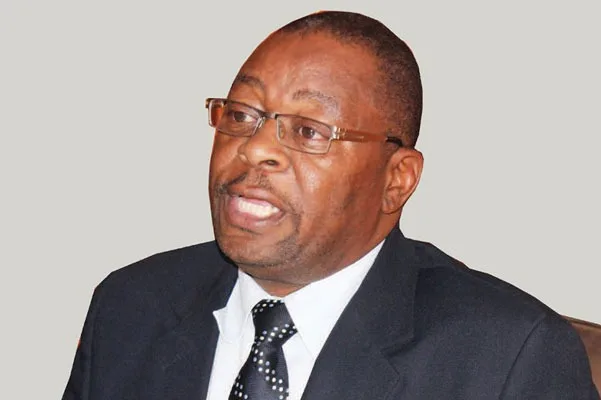By Johnson Siamachira
Harare, New Ziana) – On a scorching October day in Chimanimani, the Eastern Highlands region of Zimbabwe, John Muusha, a 58-year-old father of three, trudges into a clinic, beads of sweat trickling down his face, to seek relief for the dizziness and chest pains that have plagued him for weeks.
Advised by local nurses, Muusha travelled 70 kilometres to the private health facility, expecting the usual physical interaction with a doctor, but today’s consultation is unconventional, as he will see the physician via a video call.
“I am not used to this,” Muusha admits, but the excruciating pain pushes him to embrace the new approach.
As he discusses his symptoms, the doctor quickly diagnoses him with high blood pressure, sends a prescription and, within days, Muusha feels better.
“I ‘m improving every day,” he says, grateful for a service that saved him from an arduous journey to the provincial capital Mutare, 147 kilometres away.
Zimbabwe faces significant healthcare challenges, with only 1.7 doctors per 100 00 people, far below the recommended World Health Organization ratio of 10 doctors per 10 000 people.
Limited access to medical facilities as well as a shortage of healthcare professionals have left many in rural areas without adequate care and telemedicine emerges as a beacon of hope, expanding healthcare access through technology.
Initiatives by the government and organisations like ZimSmart Villages are transforming the healthcare landscape, connecting remote facilities to central hubs and introducing telehealth kiosks in underserved areas.
The healthcare infrastructure in Zimbabwe has also long struggled under economic strain, with fewer than one health facility for every 10 000 people. The country has a shortfall of 64 000 health care workers and needs to double the workforce by 2028 to meet the needs of its citizens, according to the Minister of Health and Child Care (MoHCC), Dr Douglas Mombeshora.
The MoHCC, in collaboration with the International Telecommunications Union, has initiated telemedicine projects since 2015 to alleviate these challenges with the first pilot connecting 12 remote hospitals to a referral hub in Harare, and by 2023, the initiative had expanded to link 173 facilities across three provinces.
ZimSmart Villages has taken this further, setting up e-health centres and telehealth kiosks in rural areas, allowing patients like Muusha to consult doctors through platforms such as BatsiHealth. “We are democratising access to healthcare,” says Dr Admore Jokwiro, co-founder of ZimSmart Villages. “Through our service, we enable early identification of chronic illnesses and enrollment into care.”
Itai Rusike, executive director at the Community Working Group on Health (CWGH), says telehealth can be vital during pandemics like COVID-19 to allow primary care providers to continue providing medical care to their patients.
“But the successful implementation of telehealth requires adequate data infrastructures, adequate and well-trained staff, and clear management and communication protocols in dealing with patients,” he says.
Meantime, however, telehealth is growing. In the last six months, 1 800 telehealth consultations have been conducted and over 5 000 visits for blood pressure and blood glucose checks, says ZimSmart Villages’ Jokwiro.
“In the first half year of 2025 we doubled consultations to 4 000 and screened at least 50 000 clients,” he says.
Despite the promise of telemedicine, challenges abound. High data costs and poor internet infrastructure have hindered access to these services. However, the recent licensing of Starlink, Elon Musk’s satellite network, brings hope for improved connectivity, particularly in remote areas. ZimSmart Villages has already connected two of its 17 e-health centres to Starlink, expanding access to vital health services.
Power supply issues also add another layer to the burden, but portable, grid-independent equipment is being deployed to ensure uninterrupted service. “We are addressing the barriers head-on,” Dr. Jokwiro adds. “Our goal is to make telehealth accessible to everyone.”
Munashe Muronzi, a 65-year-old heart disease patient from Mungate Village in the Domboshava area of Goromonzi district in Mashonaland East province, says: “I can consult with my cardiologist from my living room. It has made managing my condition so much easier.” His sentiments reflect a broader trend; telehealth significantly reduces travel time and costs for patients, especially in rural areas where access to healthcare can be a Herculean task.
The affordability of telehealth consultation fees, ranging from US$5 to US$10, further enhances accessibility. Many patients, like Muusha and Muronzi, find solace in the convenience of receiving care from home, which not only saves time but also protects them from the financial burden of traveling to distant facilities.
As telemedicine continues to grow in Zimbabwe, the outlook remains positive. The government aims to establish numerous telehealth sites across the country, including kiosks in post offices and shopping centres, to ensure equitable healthcare access. Ongoing efforts to improve infrastructure and increase funding will further bolster these initiatives, alongside the development of guiding policies to support the scale-up of telehealth services.
Telemedicine is not merely a temporary fix; it stands to revolutionise healthcare in Zimbabwe, bridging gaps caused by inadequate resources and personnel. As Muusha and Muronzi’s stories illustrate, technology can transform lives, offering hope and healing to those who previously felt abandoned by a struggling healthcare system.
The integration of telemedicine in Zimbabwe signifies a crucial step towards addressing the systemic healthcare challenges faced by the nation. By harnessing technology and fostering partnerships between government, telecom providers, and healthcare innovators, Zimbabwe can pave the way for a future where quality healthcare is accessible to all. Through telehealth, the promise of personalised, convenient, and portable healthcare becomes a reality, ensuring that no one is left behind in the quest for health and well-being.
New Ziana



